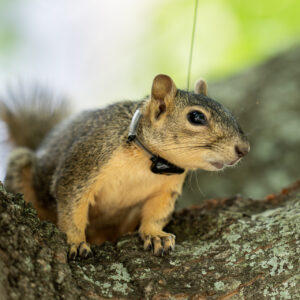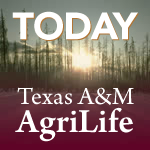Replicated Cotton Soil Fertility Project
Cooperator: Eddie Helms – 2001
Leon Church, Randy Boman, Mark Kelley, Alan Helm, and Mark Stelter
County Extension Agent-Agriculture, Extension Agronomist-Cotton,
and Extension Assistants-Cotton
Donley County
Summary: Fertilizer treatments based on university laboratory testing and recommendations were included in this project. No statistically significant increase in lint yield was obtained from phosphorus fertilization. The response to applied nitrogen indicated that 70 lb N/acre were required to significantly increase lint yields above the unfertilized check and to significantly increase net value/acre after considering fertilizer costs. After subtracting fertilizer and ginning costs, net value/acre ranged from a low of $310.02 for the unfertilized check to a high of $393.70/acre for the 70-0-0 treatment, a benefit of about $83/acre. Lint loan value was not economically impacted by fertilization even though some significant differences were noted for micronaire and length.
Objective: The purpose of this project was to evaluate the effects of various fertilizer rates, based on soil test recommendations, on irrigated cotton yield and quality.
Materials and
Methods: An area on the Eddie Helms Farm near Lelia Lake was selected. Peanuts were produced on the site in the previous crop year. Soil samples were taken from 0-6 and 6-12 inch depths and submitted to Texas Cooperative Extension Soil, Water, and Forage Testing Laboratory at College Station for analysis. The resulting soil test values were then considered and fertilizer recommendations were generated based on a 1.5 bale/acre yield goal for nitrogen (N) and established calibrated recommendations for other nutrients based on results. It was assumed that 50 lb of N is required per bale of yield goal, therefore 70 lb N/acre was required based on soil residual N. The Extension laboratory recommended 20 lb P2O5/acre using its soil extract method. No potassium fertilizer was recommended based on soil testing and calibrated university recommendations. No other nutrients were indicated deficient by laboratory testing. A treatment structure which included the recommended N rate, a sub-optimal N rate, with and without added phosphate fertilizer was developed. An unfertilized control was also utilized.
The five treatments included in the project and their respective cost were as follows:
Treatment 1: Untreated control (no fertilization = $0.00/acre)
Treatment 2: 35-0-0 ($11.69/acre)
Treatment 3: 35-30-0 ($15.09/acre)
Treatment 4: 70-0-0 ($19.31/acre)
Treatment 5: 70-30-0 ($26.70/acre)
Two basic fluid fertilizer sources were used to apply respective treatments to plots including 32-0-0 (cost = $140/ton of material) and 10-34-0 ($210/ton of material). A charge of $4.00/acre for application cost was assumed for all fertilizer rates. Appropriate fertilizer amounts from various fluid sources were broadcast applied using a Lee Spider Sprayer on May 9. A randomized complete block design with three replications of each treatment was utilized. Each individual plot was eight 36-inch rows wide by 1200 ft long. Fertilizer treatments were applied to the center six rows of each treated plot in order to reduce border effect between adjacent plots. Fertilizers were incorporated using tillage equipment after application. FiberMax 5013 variety cotton was planted at 12 lb/acre seeding rate on May 22. Normal production practices were used during the growing season. The site received approximately 24 acre-inches of irrigation which was applied using low elevation spray via a center-pivot. Four rows by 300 ft in length in the center of each plot were stripper harvested (using a field cleaner) by the producer on December 7. Stripped cotton was dumped into a Crust Buster boll buggy equipped with integral digital scales and weights were recorded for each plot. Grab samples of the harvested material were then ginned at the Texas A&M Research and Extension Center Ginning Laboratory at Lubbock. Fiber samples were submitted to the International Textile Center at Texas Tech University for HVI analysis. Loan values for lint samples from each plot were determined and used to calculate lint value/acre. Plot yields were adjusted to lb/acre. Data were subjected to analysis of variance to determine statistical significance of treatments. Ginning costs were assumed to be $1.55/cwt of bur cotton (bagging, ties, and checkoff not included). Seed value was assumed to be $85/ton.
Results and
Discussion: Lint yields and other parameters are reported in Table 1. Bur cotton yields were increased by fertilization, however, lint turnout and seed turnout percentages and lint to seed ratios were not affected. Lint yields ranged from a low of 620 lb/acre for the unfertilized check to a high of 832 lb/acre for the 70-30-0 treatment. Seed yields were increased by fertilization in a similar manner as lint yields. Lint loan values were not affected by fertilization. Gross lint value/acre (lint yield times loan value) ranged from a low of $296.53 for the unfertilized check to a high of $393.91 for the 70-0-0 treatment. Seed value/acre was also increased by fertilization. The total gross value/acre (lint value plus seed value) was increased by fertilization, and ranged from a low of $342.43 to a high of 456.72. After subtracting fertilizer and ginning costs, net value/acre ranged from a low of $310.02 for the unfertilized check to a high of $393.70/acre for the 70-0-0 treatment, a benefit of about $83/acre. Although recommendations from the Texas Cooperative Extension Soil, Water, and Forage Testing Laboratory at College Station suggested that a marginal rate of 20 lb/acre P205 should be applied, no statistically significant increase in lint yield was obtained from phosphorus fertilization at 30 lb P2O5/acre. The response to applied N indicated that 70 lb N/acre were required to significantly increase lint yields above the unfertilized check and to significantly increase net value/acre after considering fertilizer costs.
Lint loan value was not economically impacted by fertilization even though some significant differences were noted for micronaire and length (Table 2).
Acknowledgments: The authors express gratitude to Eddie Helms for providing the land and equipment to conduct this important project.
Disclaimer Clause: Trade names of commercial products used in this report are included only for better understanding and clarity. Reference to commercial products or trade names is made with the understanding that no discrimination is intended and no endorsement by the Texas A&M University System is implied. Readers should realize that results from one experiment do not represent conclusive evidence that the same response would occur where conditions vary.
Table 1





